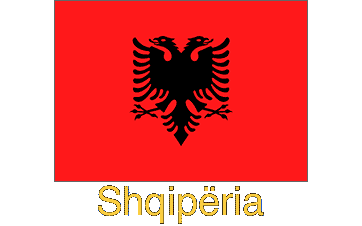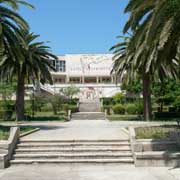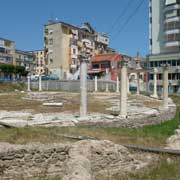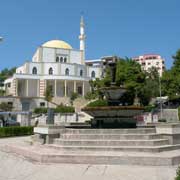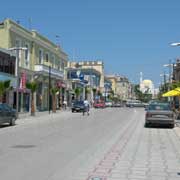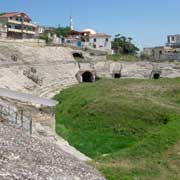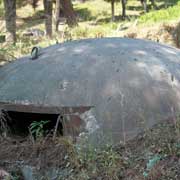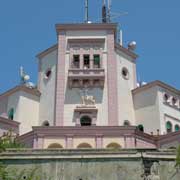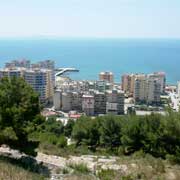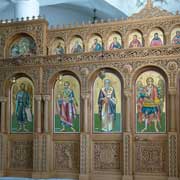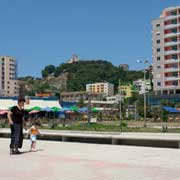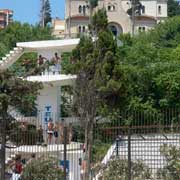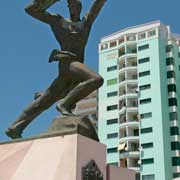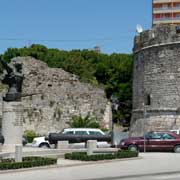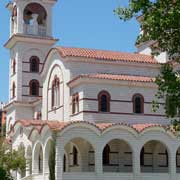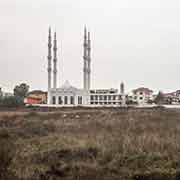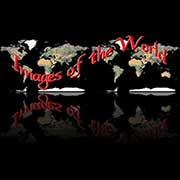Photos from Albania
Durrës, Albania’s second largest city
Durrësi, (or Durrës in a sentence with a preposition) is the second-largest city of Albania with a population of around 115,000. It is its main harbour, on the Adriatic Sea. Durrës long used to be known by its Italian name of Durazzo, but its Albanian name is now used internationally.
you may then send it as a postcard if you wish.
Durrës is the most ancient and one of the most economically important cities of Albania. It was founded as Epidamnos in 627 BCE by Greek colonists and conquered by the Illyrians under their King Glaukias around 300 years later. In 229 BCE, however, it was absorbed by the Roman Empire, was renamed Dyrrachium and became a significant military base. It became the capital of the Roman province of Epirus Nova in the 4th Century CE. Important Roman ruins are still visible: an amphitheatre, a basilica and massive defensive walls. Its subsequent history is one of repeated sieges and occupations by Ostrogoths, Bulgarians, Byzantines, and Venetians and in 1501 fell to the Ottoman Empire. It was in severe decline, and in the mid 19th Century, it had only about 1000 inhabitants.
Durrës was active in “Rilindja”, the Albanian national liberation movement in 1878-1881 and 1910-1912. Ismail Qemali raised the Albanian flag on 26 November 1912, but the Serbs captured the city three days later during the First Balkan War. On 7 March 1913, it became the capital under the brief rule of Prince William of Wied and again between 1918 and March 1920. It became a major seaport during the government of King Zog when in 1927, a modern harbour was constructed. Zog also built a palace here. Durrës was renamed Durazzo again when Italy annexed it with the rest of Albania in 1939: the Italians landed here on 7 April 1939. The city was heavily damaged by Allied bombing during the war, and the retreating Germans blew up the port installations in 1944. The Communist regime of Enver Hoxha rebuilt the city and established heavy industry here.
When Communist rule collapsed in 1990, Durrës became the focus of mass emigrations from Albania with ships hijacked and sailed at gunpoint to Italy. The Italians then intervened militarily and put the port area under its control. In 1997 Albania slid into anarchy following the collapse of a massive pyramid scheme that devastated the national economy. An Italian-led peacekeeping force was deployed to Durrës and other Albanian cities to restore order. During the Kosovo War in 1999, the city hosted some 110,000 refugees fleeing fighting in Kosovo and became a base of operations for much of the refugee response by aid agencies in Albania. Durrës now has daily ferries to Bari, Italy, important cultural buildings and Roman ruins. There are also numerous concrete bunkers from when the paranoid Communist regime feared attack from either the West or the Warsaw Pact, which never came.


